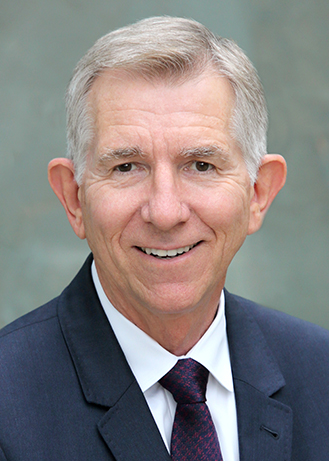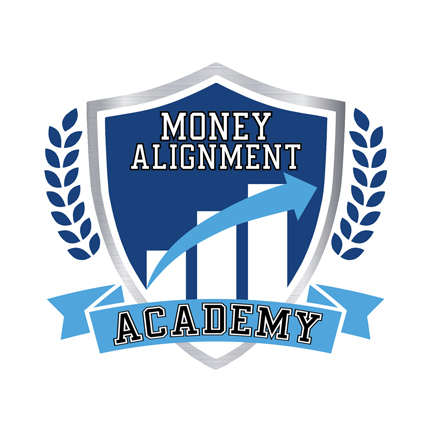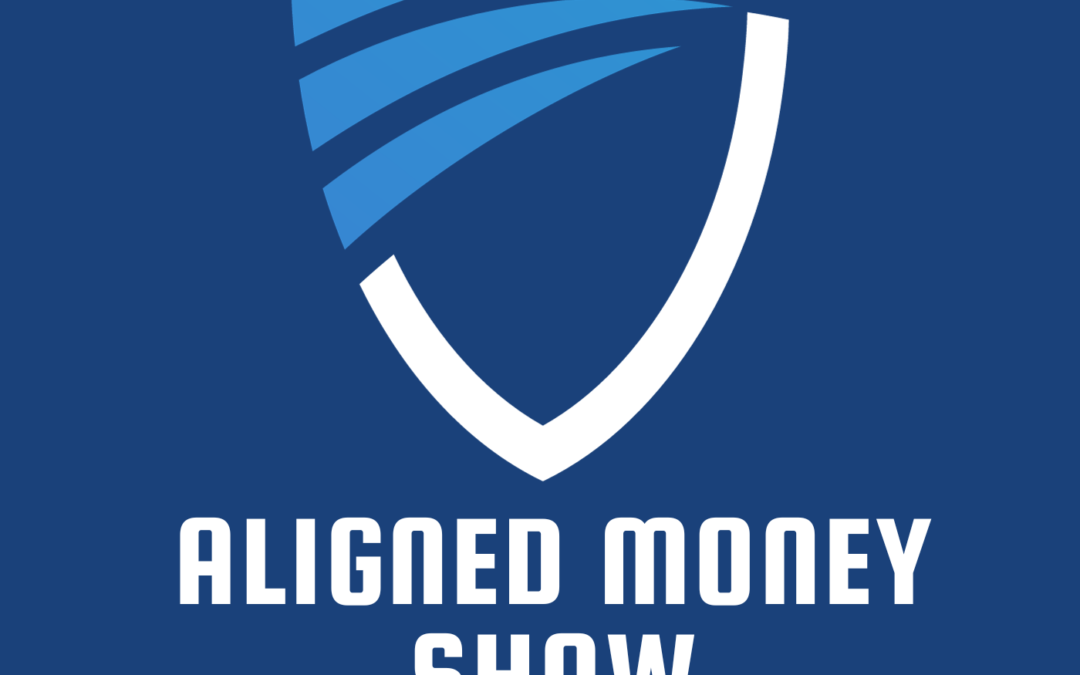Total Return Indexing with Mark Hebner
What’s the difference between price return and total return indexing? Mark Hebner breaks down the often misunderstood and misrepresented differences!
Listen to us On
About the Episode
We focused on the difference between total return and price return, the impact of adding dividends into the equation, the reasons why the industry has ignored this discrepancy, and how it could be impacting you as an investor, with Mark Hebner, Founder and CEO of Index Fund Advisors, author, speaker, and thought leader.
You can learn more about Mark at IFA.com, Facebook, Instagram, X, YouTube, and LinkedIn.
You can watch the YouTube video here:
Did you get anything out of this episode? Do us a solid and leave a review:
https://ratethispodcast.com/alignedmoneyshow
Learn more and engage at MoneyAlignmentAcademy.com, Twitter, LinkedIn, Instagram, YouTube and Facebook.
Buy George G a coffee (he loves coffee)
https://www.buymeacoffee.com/lifeblood
Have George G speak
https://moneyalignmentacademy.com/speaking/
Financial literacy and wellness for individuals, families, and companies
https://moneyalignmentacademy.com/
Find George G’s books here
The Aligned Money Show is the podcast for Money Alignment Academy, copyright 2024.

George Grombacher
Host

Mark Hebner
Guest
Episode Transcript
eorge grombacher 0:02
Mark, welcome back to the show. I know I just I just finished reading the 20th version of index funds. It’s an absolute beautiful book. And I know that you are just about to celebrate the 25th anniversary of index fund advisors. And I was just wondering, could it be anything that this guy doesn’t know? So are you ever learning learning anything new mark?
Mark Hebner 0:25
You know, it’s one of my favorite scenes that every day we learn something new. In fact, with my kids, we used to sit around the dinner table and ask them, you know, what was your best thing today? Your worst thing today and what you learn today, for that very reason. So yes. And I’ve just learned something that’s really important that I’m dying to share with your listeners.
george grombacher 0:51
All right, let me bring up, bring up our chart here. And there it is. And for the folks who are listening, and not watching on YouTube, I will put this on the website or the actual page. So in the notes, you can click on it and be able to follow along with us. So walk me through this, sir.
Mark Hebner 1:13
So let me give you a little background. On March 5 of this year, our company is celebrating its 25th anniversary of providing investment advice over the internet, largely but we also have a whole team of investment advisors, wealth managers, we call them that work with clients. And so as part of our celebration of this 25th anniversary, we were going to do a little dinner, and I was going to just get up and give a little 10 minute presentation. And one of my thoughts was wait, oh, it’d be cool to show where the s&p 500 was when we started and where is it today? And where was the Dow? And then what is it today? So people could see how these things grow? Because it kind of creeps up on people. They don’t really know how quickly and has been changing. So I go to my data team. And I asked them to present this data and a little table for me. And they come back and they say do you want to see price return or total return? And I thought myself, let’s see, we always use total return when we’re showing what we call the IFA indexes, threw up my book and on the website. I said, What do you mean about price returns? She says, Well, the returns that people see and the index values that people see on CNBC and Wall Street Journal, and Barron’s MarketWatch Morningstar, all of the typical Motley Fool typical financial media sites is a price return only. And I thought, Oh, well, how much difference is that make? And so she goes back and calculates this table for the last 25 years. Now this is not exactly 25 years, because when we made this it was right it, it was January. So we had year end data for 2023. So you see there in the subtitle, this was 24 years and nine months. And it showed that the s&p on a price only basis what I’m calling a partial return, earned 5.5% for that whole period, or a cumulative return of 282%. And if you went back to March 5, and 1999, the s&p price only index was at 1275. And today, as many of you know, we recently crossed 5000. It was at about 4800 at the year end. And then I said to my data team, I said well, what would the s&p be today? Had we had a total return, and they came back and give us the second line? Well, the total return was seven and a half percent per year. So that is a 2% average dividend per year. And the cumulative return, I’m not using total return because it’s a little confusing. It was 508% cumulative with the dividends, which is your actual return. And if you went back to March 5, the total return index was at 3758. Because it had dividends from 1970. until that date, that’s the date they started doing a total return index of the s&p 500 The inception date. But here’s the bottom line. When you watch the TV, you see 5000 up there for the s&p 500 It’s actually 22,000 and by Today we’re with we’re over 5000 We’re probably closer to 23 or 24,000. And so it’s really interesting to me that the financial media is only showing us this partial return of 5.5% over the last quarter century there for 25 years, instead of the seven and a half percent return, which is the return, including the dividends. And everybody should know it’s basic economics to know that your total return is the change in your price, otherwise known as your capital gain, plus the dividends you earned. And that equals total return. And so it’s a little shocking to me, that somehow we’re kind of stuck in this rut of only looking at the price return. And we’re, as I dug a little deeper George, I found out that the DAX, the German exchange index, which is kind of like our Dow, and I’m going to talk about the Dow in a minute, has 40 stocks in it. And I believe it’s 1987, that they started collecting dividends on that particular index. And so for a very long period of time, they had been showing the DAX with a total return index. And I heard during Brexit, people started looking at the returns of various countries. And they were shocked to see that Germany had outperformed all of the other countries. But the reason they did is they showed the total return with dividends at all of the other countries, including England showing whether with their footsie 100, we’re only showing a return of just the price change. Now, let me just do the Dow index unless you got another question. No, you’re good. Okay, good. So if you looked at the Dow, it’s actually quite similar. It was a 5.7% return over this 25 year period is 24 years and nine months to be precise. And you may have noticed the Dow recently hit 38,000. Well guess what if the total return or what I like to call the true return now is actually 8.2%. And today, the Dow should be almost 100,000 instead of the 38,000 that you see on TV. And even that doesn’t go all the way back to like 1926, when the quality Dow data was available, Dow started in the 1800s somewhere, but it was just a bunch of railroads. And so it’s probably even far more than that. I heard recently, that somewhere between three and 4%, of the returns of the market since 1926 have been tied to dividends, and the total is only 10%. So roughly 30 to 40% of the total return has been excluded from these indexes that we see on television and on financial media every day. So it is now my mission. And I have a nice petition at ifa.com/petition to get these financial media companies all over the world to switch to total return indexes. So investors can get a better sense of the returns. There are to be earned, which, and the easiest way to do that is through buying an index fund had you bought the s&p 500 Index Fund, for example, last year, you would have earned about 26.2% return. But the price only index was only 24%. In fact, I just came back from an economic forecast meeting where the economist was going through all these slides about GDP. And the last slide was about the market. And he actually showed the s&p 500 is being up 24.2%. And I had to raise my hand because I couldn’t stand it. And I said oh, but that doesn’t include the dividends. With dividends. It was actually 26.2%. And he was a little confused. He thought that included the dividends and it was a total return, but it was not. So this is very prevalent as I start talking to journalists that the Wall Street Journal people who used to work at Standard and Poor’s, and just i Oh, we already have 90 people. 93 people I believe this morning that signed our petition. Everybody’s going da why aren’t we showing total return? So your listeners could sign our petition, maybe talk to whoever they can that has any connections to the financial media. And let’s see See if we can get this thing switched over to a total return index so people can see the true value. Let me just talk about the footsie 100 You can go back 40 years, and the price only index was only four and a half percent. But when you included the dividends were which were actually 4%. In these 100 largest companies in the UK, the total return was eight and a half percent. That is a dramatic difference in the total return over a 40 year period. Same thing with the Nike Nikkei index. So they were just celebrating yesterday that the Nikkei had reached its all time high and came back from what it was I don’t even know how far back was in the ad somewhere. But it turns out if you include a dividends, it reached that high, it returned back to its high in March of 2021. But somehow, everybody forgot to celebrate.
george grombacher 11:02
We missed out on a great party. All right. Yeah. So. So really basically, can you explain what a dividend is? Do all companies issue them? And do I actually get that if I am? Like, it makes sense to me that if I actually own the individual equity, like that, I get the dividend. But do I get it if I own an index, like a mutual fund or an ETF?
Mark Hebner 11:29
Yes. So what is the dividend? So companies make profits. And they can do pretty much no, I don’t know if it’s exclusively but the main two things they could do with those profits, is reinvest them back into the business, through new plants and equipment through salary increases, you name it, all of the ways they can expansion through acquisitions, a lot of different things that companies can do with the capital that they earn and their profits. But the other thing they can do is they can give a dividend to their shareholders. And so let’s say Microsoft is trading at I don’t even know what the last price is $70 or something. And they decide they want to give a $2 per share dividend to their shareholders, well, they can choose a date, and all the shareholders who own shares, that date will be issued a $2 dividend. And this is where things get a little confusing. George is people think that if the shares were $70, and the company decided to issue them a $2 dividend, that the shares were still worth $70. Well, it’s not true. In looking at the value of the company, the simplest thing to value is the cash. And so literally, by definition, the value of a company drops by the amount of the dividend. And this is a problem when you think about price only dividend returns is that $70 stock became $68 After that $2 dividend, and that’s what you see. And looking at the price only return it actually declined in value $2. So that’s what a dividend is. And let’s see, what was the other part of your question? I’m getting 72 here. And you can only ask me one at a time, George,
george grombacher 13:33
no, I, I totally get it. If I own the s&p 500 index in ETF.
Mark Hebner 13:42
You do get the dividend. The ETF issues, dividends, but not capital gains. If you own a mutual fund, you are also distributed those dividends. Now, that’s not always a good thing I like to think of a dividend is a forced sale by the company, they’re actually requiring you to take a a component of the shares you own and have it distributed to you. And one of the problems with that is then you get taxed on it. But so a lot of high tech firms don’t issue dividends because they have so many things, a lot of research and development and expansion that they can use those profits for rather than distributing out to shareholders. But if you’re a REIT, or you’re a utility, some of the more classic old companies, older companies, but not always even Mehta, or Facebook recently decided to issue a dividend. They get to a point where they would rather enhance shareholder value. At least that’s what they’re saying. In reality, it’s a breakeven because the value of the company drops by the divot. it, but they, a lot of people are dividend seekers. And so they think that the company will attract more shareholders by issuing these dividends, but you will get that dividend and a mutual fund. And an ETF in the mutual fund is kind of interesting, because let’s say that a mutual fund is trading at $11. At the end of the day, they issue a $1 dividend, you will see very clearly that the next morning, the mutual fund is now trading at $10. And if you reinvest those dividends, that $1 can then be buy more shares at the $10 price. And so again, just overnight, it looks like your mutual fund lost $1, when in fact, you reinvested it in you ended up with more shares at $10. And the total dollar value of your position remains the same. That’s the simplest way to think about dividends is not adding value. But when we’re talking about these indexes, what we’re concerned about is looking at that $11 Price turning into a $10 price, and therefore the dividend is not visible when only looking at the price. Is that that’s a little confusing.
george grombacher 16:27
But if you think that it makes sense. It’s confusing as to why it is that that we’ve all been focused on price return versus total return. Yeah,
Mark Hebner 16:36
that’s that’s part of it. But it’s, it’s really a shame the the common number everybody hears is that, you know, the market pays roughly 10% a year for the last 95 years. Well, that is a total return number. And when you look at these indexes that we look at every day, that is not what you’re seeing, you’re seeing somewhere between 60 and probably 80% of that gain of that 10% Gain on average, by only looking at the price change, because you’re not adding back the dividends that you received along the way.
george grombacher 17:18
So do you have a sense of why it is that Yep.
Mark Hebner 17:21
So Jason swag I’ve been communicating with at the Wall Street Journal is an excellent journalist that has written about sort of passive index investing for I don’t know how many years now 20 years plus 25 years maybe Jason hypothesize that it was for two reasons. The first one, which is really disturbing to me is laziness. And that the financial media doesn’t want to go through the education, and the difficulty of reprogramming everything to read the total return file instead of the price only file. So these indexes are sold as packages, I spoke to somebody from s&p 500, there’s a US package and in that package is the price return and the total return index. So literally, they just have to go in there and recode their, the file, they’re reading to the total return file. Now I have a call with the s&p, s&p data people here coming up maybe in the next week or so. Because I want to make sure that’s the only issue. I’m a little concerned about what they’re going to do about intraday, but I don’t think it’s a problem because DAX has been doing this for many, many years. And they literally update their total return index every second. So So laziness is number one. The second one is a little bit disturbing. And that is to be deceitful. So think about this for a moment. I was just at this conference and the economist said the s&p 500 was up 24% Last year, right? Well, let’s say your stockbroker is buying a portfolio of 50 stocks for you. And when you look at your statement, your return for the year includes the dividends that those companies issued. And that stock broker says, Well, look, the s&p was up 24% last year, and I was up 26%. Let’s assume for the moment he got the same as the s&p 500 stocks plus their dividends, okay, which is what you earned. And he’s gonna say look at that I beat the benchmark by 2%. I spoke to my friends that that is falsehood, by the way. It’s not correct because it didn’t include the dividends because it’s a price only index. I spoke to my colleagues in India up. And as early back as 2018, a mutual fund was able to report their returns against the price only index in their financial reporting to their shareholders. Wow. Just to make that clear in the US, all the mutual funds when they compare their performance in their prospectus or whatever they’re they’re showing to the public, they need to compare their return to the total return index, not the price only. So he has another crazy thing. You’re, when you’re looking around these returns, you don’t even know which one is the price, and which one is total, which is obvious, because this economist just had it wrong. I mean, he’s a University economist talking to a room of there must have been 100 people there, and he had the wrong return there. So this is a problem. Good agree that needs to be fixed. And so the deceit element is particularly worrisome to me that there are probably a lot of stock pickers, brokers, even registered investment advisors who pick stocks for their clients, who may be I can’t claim that they’re all doing this, but maybe complaint comparing their returns to the price only index and appearing that they’re generating an alpha, that’s an excess return relative to that benchmark, when in fact, all they’re doing is they’re counting the dividend in their return. But the index that comparing to does not have the dividend. Does that clear? George? Yeah.
george grombacher 21:48
I think for the most part, it is. It is.
Mark Hebner 21:52
I need to fix that. What? What?
george grombacher 21:55
No, it totally is, it’s okay. It is crystal clear. What jumped into my mind, I’m probably going to get this wrong. But the saying is don’t attribute to malice, malice, where you can attribute to incompetence? So who knows?
Mark Hebner 22:09
It could be yes. Well, that’s what Jason said one or the other, right? incompetence might be in the laziness category. Right? These companies just don’t want to deal with it. So let me reserve my comments a little bit, I might discover there is some technological barrier to all of this media getting total return data, but you can go to Yahoo Finance right now. And and put in Standard and Poor’s total return, and you will see it there. So it is clearly available to people. And the question is the data feed cleared up. But that is just a technological update that’s needed, because DAX is already doing it and providing that data. In fact, it appeared to me this morning, watching CNBC. Up showed the DAX return right on the screen. And I’m thinking, Okay, now we got a real problem, because we’re now comparing price returns to total returns on the same screen. And most people don’t even know it actually spoke to a CNBC commentator yesterday. Somebody you would all know I don’t want to mention his name yet. But he was even unaware that the DAX was a total return index, and was also unaware of the magnitude of this particular problem. Anyway, he was where he was. dividends were 40% of the long term return. But he wasn’t aware that what we should see on TV for the s&p is 23,000, instead of 5000. Go ahead. Got it.
george grombacher 23:53
One of my big frustrations with the financial industry with financial services is a lack of transparency. It is it is the opaqueness. It is the complexity of of just how we represent things and just look at the prospectus. And this that and the other thing, it’s really hard for the ordinary investor or regular consumers and me to be able to make heads and tails. And therefore it’s really important for me that I’m looking at Apples to Apples versus apples to oranges. So when you’re talking about how XYZ financial advisor may be saying, hey, the s&p 500 had a price return of 5.55. But what I did for you, Mr. or Mrs. Client in my wisdom and fancy ability to pick stocks, I got some eight. Yeah, and they’re using total return against price return. So how do I know as a consumer
Mark Hebner 24:53
so you have to ask how it was benchmarked. So that’s just part of the problem. I mean, one of the quotes I’m often quoted for is one of the missing links in investment analysis is the proper benchmarking. Well, before I was referring to whether you had some small caps in your portfolios of value stocks, and did you include those indexes blended together with let’s say, the s&p When you were trying to benchmark the return that you earned in your portfolio of 100 stocks, for example, because some of those stocks might have been small. And just by being small, that characteristic means they’re riskier, they should automatically have higher returns than large companies. So proper benchmarking is a massive problem. In fact, I’ve just quoted in this new film out from dimensional fund advisors, which is another thing I can provide your listener, we just received an access code yesterday to this film called Tune out the noise, I’m going to give it to you it’s called the access code is market works. markets work of Zuri on capital letters. And I’ll provide you the link to that afterwards. But in there, I tell my story, how I got started in this business. And one of the questions that was asked to me in 98, probably was, have you benchmarked your returns? I thought no, what is that? That was exactly what I say in these documentary films. But little did I know, prior to this last couple of weeks, that that that question is even further complicated by whether you benchmark using price returns or total returns. So this transparency is really what my book is all about. I’m so glad you got a copy and got to look through it. There are so many aspects to investors not understanding what’s going on the taxes is another huge thing. Someone might say you earned this, you know, eight and a half percent return. But that was a pre tax return. And if the manager is doing a lot of turnover, you’re gonna get hit, assuming they had a capital gain with that big capital gains tax at year end. And that needs to be deducted from your return. Because had you bought the ETF. You received that growth with vit with almost zero capital gains, and just because of its structure. And so it makes that a very tax efficient investment portfolio, as opposed to owning actively managed mutual funds are paying a broker to buy a bunch of stocks for you, which are, which are very tax inefficient. In fact, in the back of my book, you’ll see Theodore Aronson said, this book is wonderful. One of the quotes I have from him in the book is that he would never even own a actively traded portfolio in a taxable account. Of course, if you’re in an IRA, you don’t have those issues. So maybe you’re a little more free to trade, which is a bad thing. But at least you don’t have the tax issues. But anyway, in the area of transparency, taxes is a big, big deal.
george grombacher 28:28
So many layers to the onion, marcar
Mark Hebner 28:30
ppreciate. Fees are another huge one, people don’t know what fees they’re paying. So it’s another true a lot of them and we try to, to spell those out out throughout my book, to try to educate people on what they might be missing out on.
george grombacher 28:48
Excellent. Well, thank you so much for, for highlighting this issue. And it’s going to be fascinating to see how the industry responds and to have people circle the wagons or if everybody just collectively says Holy cow. We didn’t realize so. So more to come. What can people learn more about you? How can they get their copy of index funds
Mark Hebner 29:11
mark, go to IF a.com, India, Frank alpha. And right at the top, we have a big banner promoting my book and that we’ve done little video, little three minute videos for each of the 12 steps. I think we’re on step eight. We’re almost done with that. So you get a quick little preview. And you can order the book right there and learn about the air as well. So and maybe in that in the top right corner, you can click petition and sign the petition. And then we’re going to get some information as to how you can watch tune out the noise. I think this is the best documentary that’s ever been put together on investing. Love it.
george grombacher 29:50
Excellent. Well, more to come. Thanks again mark.
Mark Hebner 29:55
Talk to you later.
george grombacher 29:56
So everybody go to if a duck Haha check out the videos get your copy of index funds the 12 step recovery program for active investors. It is the 20th anniversary edition and check out the videos sign the petition and ask the question of your advisor, how was this benchmarked and make sure that you are getting apples to apples. So good,
Mark Hebner 30:20
I guess let George Have a great day investor relax. There it is. One
george grombacher 30:26
more thing friendly reminder. It’s never going to be anybody more interested in your financial success than you are. So act accordingly.
More Episodes
Beyond the Bank Balance: Cultivating a Soulful Relationship with Money
You don’t need to be a Wall Street shark or a personal finance guru to develop a healthy relationship with money. In fact, most of us start with little more than a jumble of beliefs and habits passed down from our families. But if you’ve ever found yourself stressed...
How Using AI Can Help You Gain Clarity Into Your Financial Future
In today's fast-paced, data-driven world, achieving financial clarity can feel like an overwhelming task. With numerous financial decisions to make—from budgeting and investing to retirement planning and debt management—it's easy to feel lost in the complexity of it...
How AI Can Help Improve Your Personal Finances
1. Smarter Budgeting and Expense Tracking AI-powered tools like Mint, You Need a Budget (YNAB), and PocketGuard can automatically categorize your expenses, track your spending in real time, and even alert you when you’re about to exceed your budget. These tools...
Trust and Confidentiality When Using AI as Your Financial Coach: Safeguarding Your Sensitive Data
In the digital age, artificial intelligence (AI) has revolutionized many aspects of our lives, including personal finance. AI-powered financial tools have become a go-to resource for budgeting, investing, debt management, and even retirement planning. But as more...
How AI Can Be Your Personal Financial Coach: Unlocking the Future of Financial Success
In today’s fast-paced world, managing your finances can feel overwhelming. With so many options for saving, investing, and budgeting, it can be hard to know where to start or how to stay on track. Fortunately, advances in technology—specifically Artificial...
How Technology and AI Are Benefiting Investors and Consumers in Securing Their Personal Financial Futures
In recent years, the rise of technology and Artificial Intelligence (AI) has profoundly transformed the financial landscape. These advancements have empowered investors and consumers to make more informed, efficient, and personalized decisions about their financial...
10 Things New Parents Should Be Thinking About Regarding Their Personal Finances
Becoming a parent is one of the most joyful and transformative experiences in life. However, it also brings new financial responsibilities and challenges. If you’re a new parent or expecting, it’s crucial to plan ahead to ensure your family’s financial security. Here...
10 Things Newlyweds Should Be Thinking About Regarding Their Personal Finances
Marriage marks a new chapter filled with excitement and partnership. While love may be the foundation, financial harmony is key to building a stable and happy life together. To set yourselves up for success, here are 10 essential financial topics that every newlywed...
Financial Tips for New Parents: Building Stability and Security for Your Growing Family
Becoming a parent is one of life’s most rewarding experiences, but it also brings significant financial challenges. From diapers to daycare, the costs add up quickly. Whether you’re a first-time parent or adding to your family, managing finances wisely is crucial for...
Join the show.
Interested in being on the show? Tell me a little bit more about you and what you’d like to talk about!














